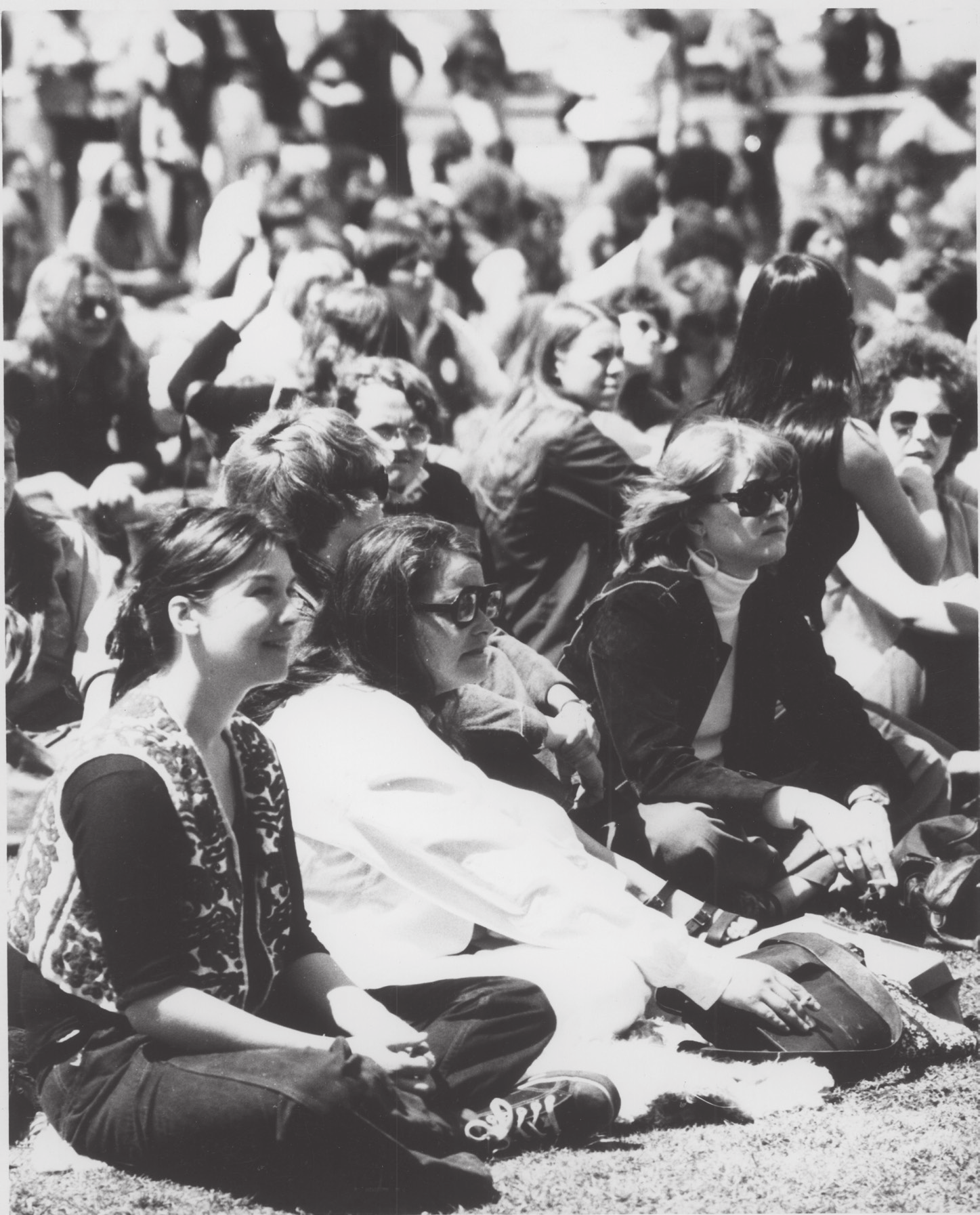4.4: Lesbian-Feminism
- Page ID
- 68340
In 1970, The Lesbian Feminist Movement came into prominence at the second Congress to Unite Women. Forty lesbian women wearing “Lavender Menace” T-shirts seized the conference and forced an open dialogue about lesbians in the feminist movement. The Lavender Menace women took the name Radicalesbians and, along with groups such as the Lesbian Feminist Liberation, advocated for lesbian rights and liberation. Reversing course from earlier hostilities against lesbian members, National Organization for Women (NOW) delegates at the 1971 national conference approved a resolution recognizing a woman's right to define her own sexuality and lifestyle.
Building on the success of the first West Coast Lesbian Conference in 1971, Jeanne Córdova invited lesbians from around the world to a second conference in 1973. With over 2,000 in attendance, the conference was the largest gathering of lesbians to that date.

Lesbian feminists opened their own bookstores, restaurants, and softball leagues to create a supportive community independent from patriarchal and heteronormative society. Amazon Bookstore opened in Minneapolis in 1970 to become the nation’s first known feminist bookstore. Women’s spaces such as the Woman’s Building in Los Angeles were founded as exclusively female centers of art and culture. By 1975, some 50 lesbian publications circulated to tens of thousands of readers across the United States. Women’s presses such as Diana Press, Naiad, Clothespin Fever Press, Daughters Inc., and Kitchen Table: Women of Color Press brought pro-feminist, pro-lesbian books to the market. Olivia Records opened in 1973 and quickly became the leader in producing women’s music. Building on the success of regional festivals, the National Women’s Music Festival in 1974 and the Michigan Womyn’s Music Festival in 1976 launched to become two of the more successful music events to celebrate feminist and lesbian musicians and the separatist ethos.


